Chico, CA Pollen and Allergy Report for Summer 2023
Pollen Allergy Trends in Chico, CA
When is pollen lowest in Chico, CA?

February
Lowest month total PPM
Avg. PPM
When is pollen highest in Chico, CA?

May
Highest month total PPM
Avg. PPM
How does pollen in Chico, CA compare to California?
Chico has a lower average PPM than the state of California.
Chico yearly avg PPM:
California yearly avg PPM:
How does pollen in Chico, CA compare to the USA?
Chico has a lower average PPM than the USA.
Chico yearly avg PPM:
USA yearly avg PPM:
Is pollen worse this year in Chico, CA?
Spring 2023 was worse than spring 2022.
Spring 2023 PPM:
Spring 2022 PPM:
Average PPM in Chico, CA
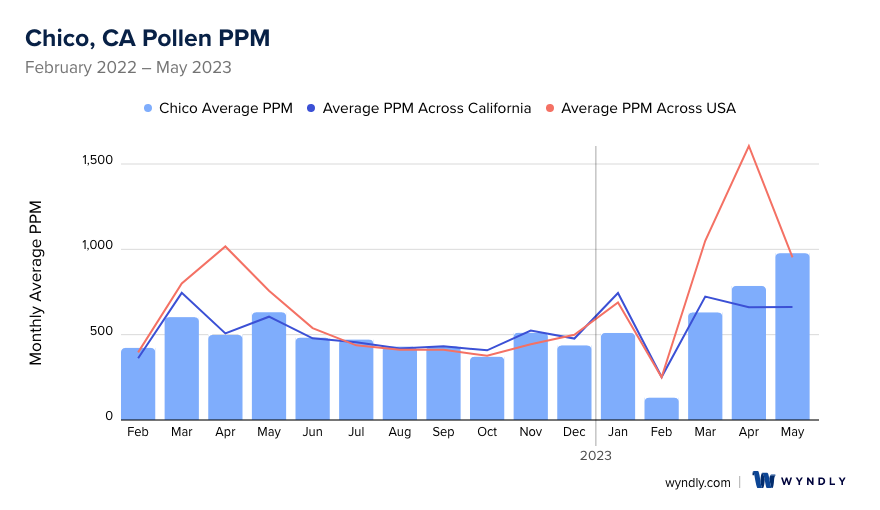
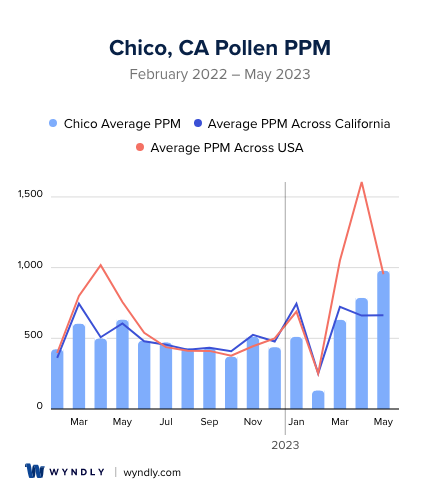
Chico, CA Pollen and Allergy Breakdown by Month
Grass
When is grass pollen highest in Chico, CA?
May has the highest grass pollen in Chico, CA with an average PPM of
When is grass pollen lowest in Chico, CA?
December has the lowest grass pollen in Chico, CA with an average PPM of
Tree
When is tree pollen highest in Chico, CA?
May has the highest tree pollen in Chico, CA with an average PPM of
When is tree pollen lowest in Chico, CA?
August has the lowest tree pollen in Chico, CA with an average PPM of
Weed
When is weed pollen highest in Chico, CA?
November has the highest weed pollen in Chico, CA with an average PPM of
When is weed pollen lowest in Chico, CA?
February has the lowest weed pollen in Chico, CA with an average PPM of
Chico, CA Pollen Monthly Breakdown by Pollen Type
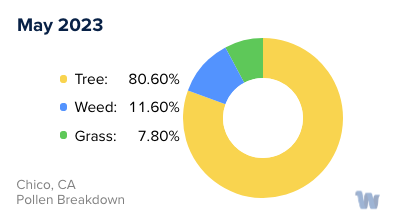
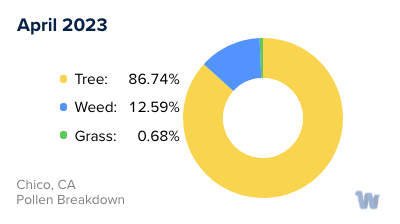
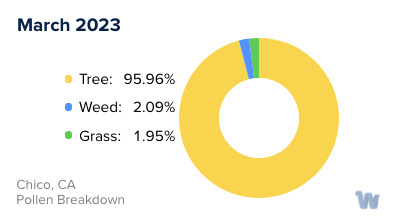
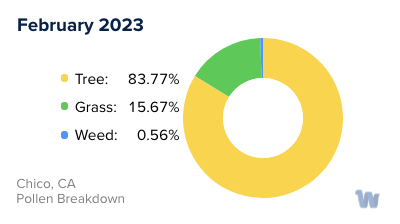
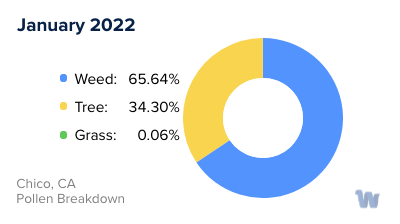
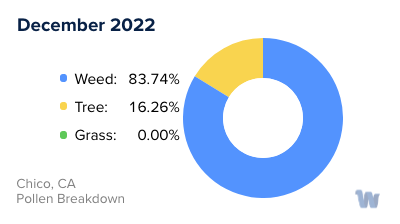
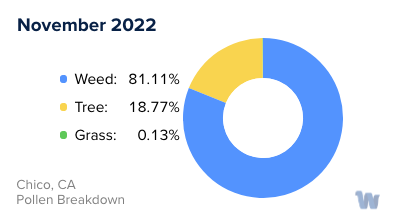
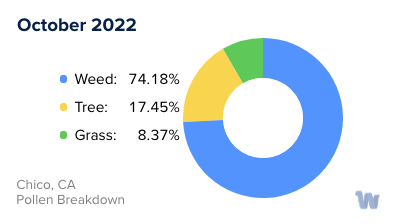
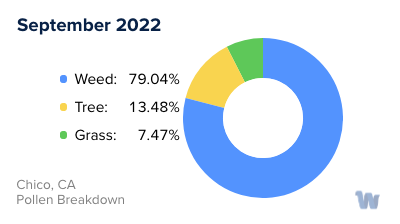
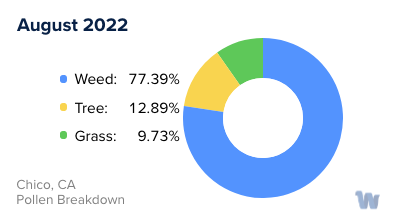
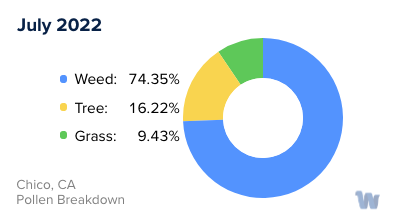
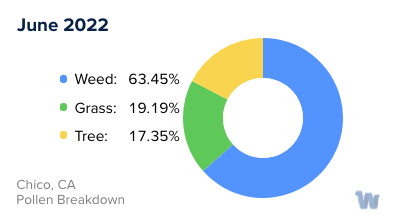
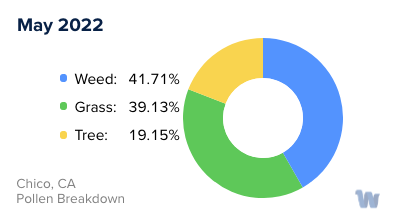
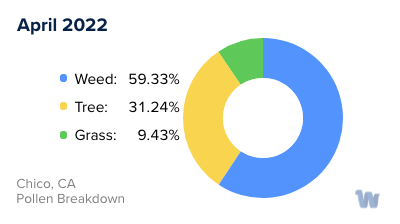
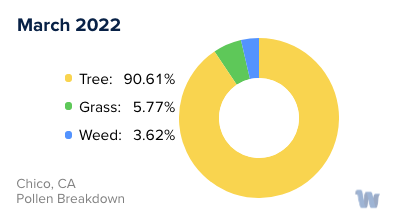
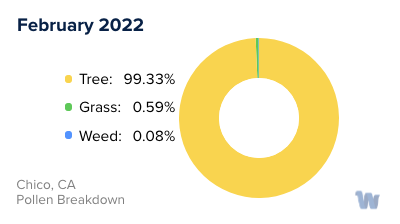
Pollen and Hay Fever in Chico, CA
If you're a resident of Chico, California, you're likely no stranger to the seasonal challenges of pollen allergies, also known as hay fever. This city, brimming with natural beauty, has an equally diverse array of plant life, which can lead to some seasonal discomfort for allergy sufferers.
The types of pollen most commonly found in Chico are from trees, grasses, and weeds. Tree pollen is typically the first to appear in the year, gracing us with its presence as early as late winter and into spring. Oak, cedar, and pine are among the most common tree pollen sources in this region, each releasing a flurry of tiny, airborne particles that can trigger allergies.
As spring turns into summer, the focus shifts from tree pollen to grass pollen. Here, grasses such as ryegrass and Bermuda grass dominate the landscape, releasing their pollen into the air. Warm, windy days can particularly enhance the spread of grass pollen, leading to peak allergic reactions.
Last but not least, as summer transitions into fall, weed pollen becomes the primary concern. In Chico, the most common culprits are ragweed, sagebrush, and nettle. These plants release their pollen typically from late summer until the first frost, extending the hay fever season into the colder months.
The timing and severity of hay fever symptoms in Chico often correlate with the bloom and pollen release schedules of these plants, making them a yearly challenge for the city's inhabitants. The pollen count—the number of pollen grains in a certain volume of air over a 24-hour period—can fluctuate daily based on weather conditions, including temperature, wind speed, and rainfall.
Understanding the types of pollen and their respective seasons in Chico can help residents prepare for and navigate the annual cycles of hay fever. While it's impossible to completely avoid exposure to pollen when living in such a diverse and vibrant ecosystem, awareness of these cycles can help individuals anticipate and manage their symptoms, even without discussing specific treatments or remedies.

